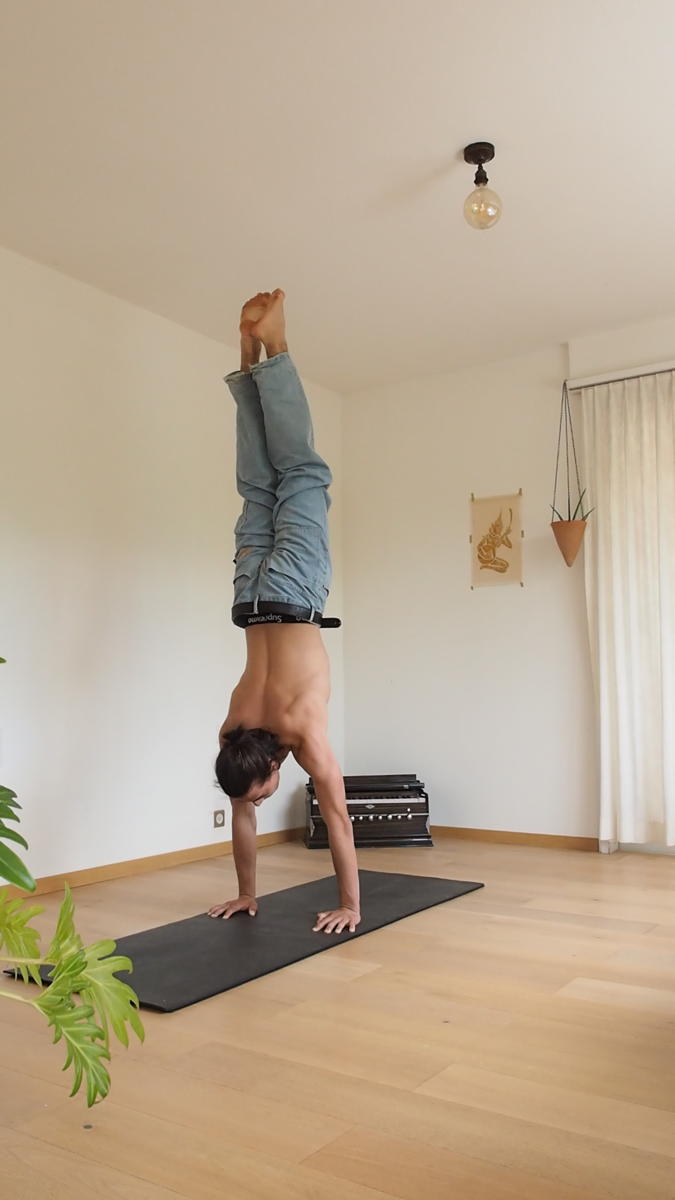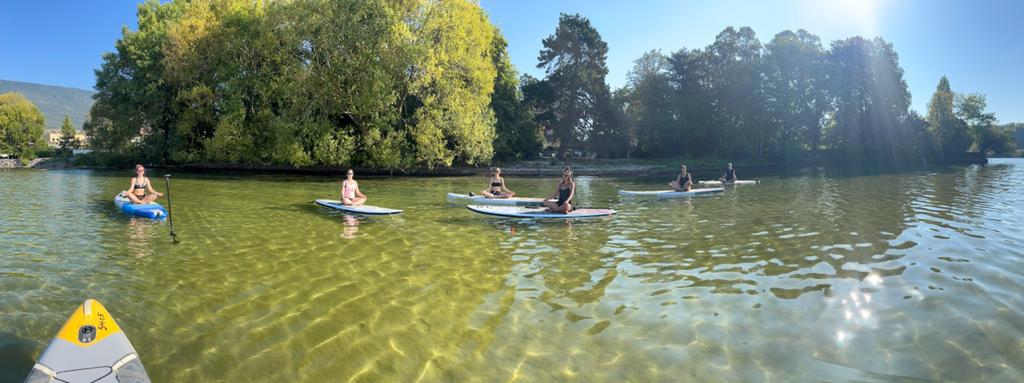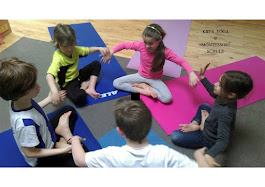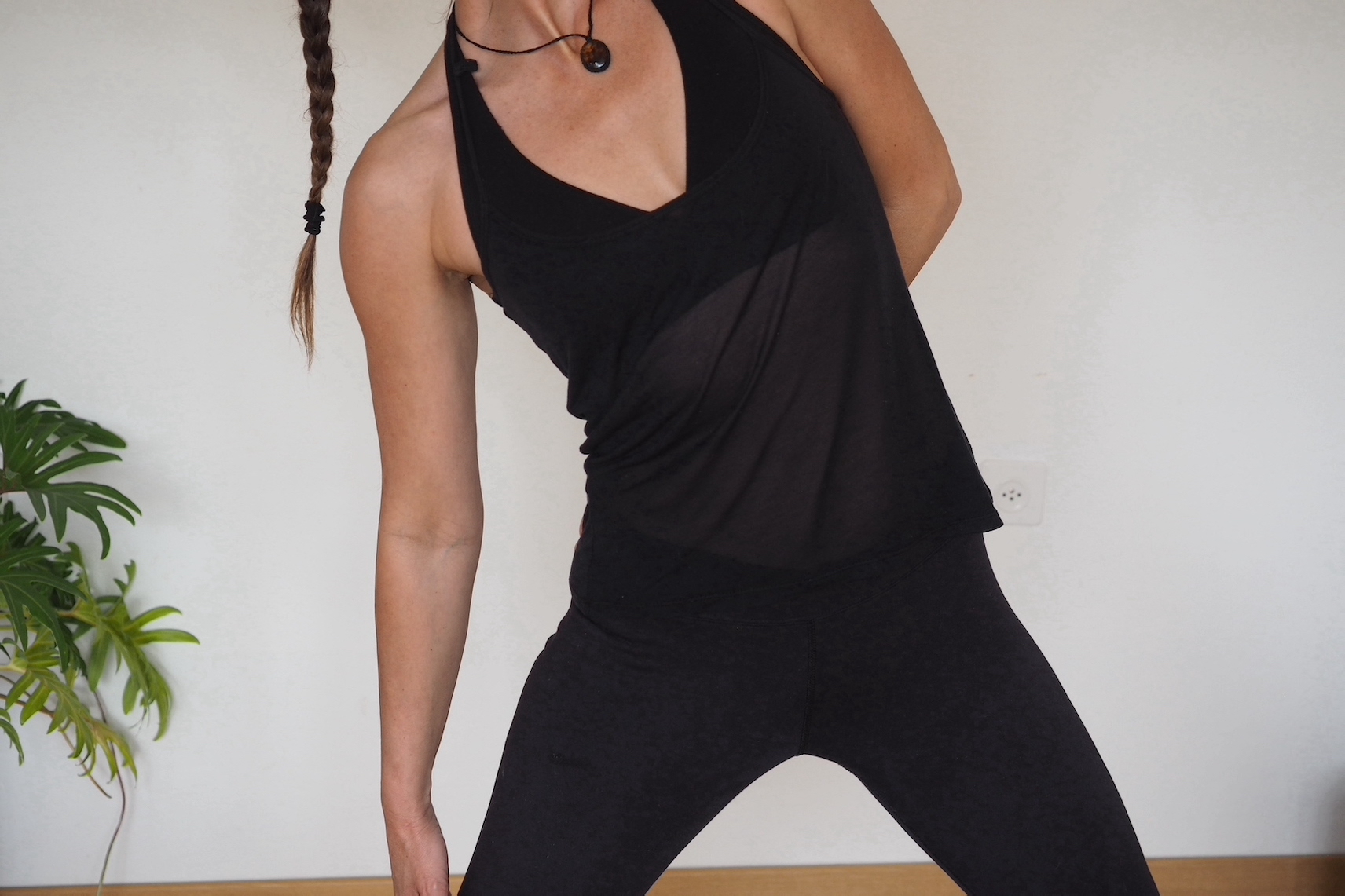Ashtanga Yoga
Ashtanga comes from Patanjali s Yoga (Yoga-Sutra) and refers to the clasical yoga of 8 « branches ».
Yama, Niyama, Asana, Pranayama, Pratyahara, Dhyana, Samadhi.
The 2 first aspects of yoga are refered to a moral code of conduct of the yogi.
Asana (physical posture) and Pranayama (breathe control) allows to reinforce body s immune system and is a preparation to the concentration exercises and meditation (Pratyahara, Dharana, Dhyana).
The samadhi refers to absolut liberation state to which the yogi aspires through his practice.The ashtanga yoga started in Occident in the sixtie thanks to the enthousiasm of Sri K. Pattabhi Jois's first students. Pathabi Jois is the actual representant of this practice, he resides in Mysore, South India.
That yoga got first develloped in english speaking countries and is now getting more common in European countries.
The peculiar part of this yoga is a dynamic sequence of the Asanas (postures) and his conscient, active, regular breath (Ujay breath).
The classes we propose you will contain the following aspects of Ashtanga Yoga :
- Asana (posture)
- Vinyasa (synchronisation of breath and mouvement)
- Pranayama (breath techniques)
- Drishtis (looking place)
- Bandhas (energy s lock)
- Relaxation
Ashtanga Yoga can be practiced by everyone in a soft, mindfull way and respecting the body's limites.
Dena Kingsberg, Louisa Sear, Lance Schuler, Nancy Gilgoff, Danny Paradise, Matthew Sweeney, Thomas Zorzo...belong among the first ashtanga certified yoga teachers
I was so lucky to have them as teachers along my path. I feel very grateful, Thank you.

Yoga Dance
Yoga Dance with Lidia is all about:
Proportion, line, space and form.
Timing, rhythm, melody and movement.
The connection between emotion, sensation and posture.
Interpersonal dynamics and communication.
The devotional, ceremonial and meditative aspects of conscious movement.
The release of held emotion and trauma through the release of tension in the body.
Effects are:
It grounds us in our physical bodies, our sensations and the present moment (meditation in movement).
It encourage and support a healthy sense of trust (acro yoga movements).
It teaches us that strength and control are only an important half of the story (let go dance movement).
and it brings the masculine and feminine aspects of our nature into balance (Hatha Yoga;Ha:sun Tha:moon, idâ: inhale pingalâ: exhale).
It strengthens our confidence and elegance in movements. (life)
Lidia Melcón

Street Workout Yoga Workout
Street workout, also known as calisthenics, is a sport that has been gaining in popularity since the early 2000s.
To put it simply, it consists of using bodyweight to build muscle and perform figures
like the front lift, L-sit or handstand.
When I started practising street workout and showing Lidia some tricks, we quickly realised that street workout is very popular.
that street workout is very parallel to yoga movements.
Street workout has modernised the techniques for learning figures like the handstand,
to learn them faster and avoid injury.
Adding these techniques to a regular yoga practice can therefore save time with
sessions and boost the learning of certain postures.

Ashtanga Vinyasa Yoga
Vinyasa is a type of yoga that links movement and breath to attain balance in the mind and body. From the Sanskrit (to place in a special way) vinyasa aligns a deliberate sequence of poses with the breath to achieve a continuous flow. Inhalation is usually connected to upward, open movements, while exhalation is often tied to downward movements or twists.

Kids Yoga
Kids do yoga too.
Easy and fun classes are proposed for 7 to 12 year old kids.
Price: 10.-
45 min.
Wednesday 2PM-3PM
www.facebook.com/Yogamovesssss/videos/368988854301863/
Hatha Yoga
Gentle, traditional Indian yoga that seeks to unify body and mind.
Simpler and more modern (15th century) than Raja Yoga, which comes from the treatise by Patanjali (500 BC).
It includes work on postures (asanas), various breathing techniques (pranayamas) and meditation (dhyana). The postures are also held for a long time (though less than in yin) and are followed by moments of deep relaxation.
Hatha means the union of the sun (Ha) and the moon (Tha).
Hatha is a Sanskrit word. It can be translated as "yoga of tenacity" or "yoga of lively strength".
This treatise, written in the 15th century, comprises 389 stanzas divided into four lessons or chapters.
It is based on older Sanskrit texts and the personal yogic experiences of svami Svatmarama. It includes information on the main Asana (postures), Pranayama (breathing discipline), chakras (spiritual energy centres in the subtle body), kundalini (energy represented by a snake coiled at the base of the subtle body), bandha (muscular contractions), kriya (yogic techniques), shakti (divine power), nadi (vessels in the subtle body) and mudra (yoga seals), among other subjects. These four chapters or lessons are
prathamopadesah: First chapter (relating to the practice of asana or postures) ;
dvitiyopadesah: Second chapter (on parnayama or breath control) ;
trtiyopadesah: Third chapter (on mudra);
caturthopadesah: Fourth chapter (on samadhi).
BKS Iyengar, Yehudi Menuhin, Jiddu Krishnamurti, Andre Van Lysbeth, Krishnamacharya, T.K.V. Desikachar are well-known teachers and figures in Hatha Yoga.

Yin Yoga
Slow-paced yoga with links to Chinese medicine.
The postures are held for longer (3 to 5 minutes).
Fascia, the fibro-elastic membrane present throughout the body, is also an important element.
Popularised by Paul Grilley in the 90s, Yin yoga is a gentle form of yoga. Although fairly recent, this practice is inspired by ancient yoga. Derived from Taoist thought, the idea of Yin represents immobility and Yang movement.
With Yin yoga, the aim is to slow down and take a meditative approach. Unlike most other yogas, there is no desire to strengthen the muscles.
You simply stay in still postures without trying to improve your stamina. As far as the mind is concerned, you have to accept all the emotions and sensations that come up when you hold the different postures. The postures must be stable and totally comfortable. In fact, it's absolutely not about performance. If Yin yoga is becoming more and more fashionable, it's undoubtedly because the need to slow down is becoming a necessity in our fast-paced societies.
THE BENEFITS OF YIN YOGA
If we don't use our muscles (or at least not voluntarily), we strengthen our joints, tendons and ligaments, and therefore our flexibility. It also helps to circulate energy. As with meditation, you learn to listen to yourself and get to know yourself better.
The aim?
To come face to face with yourself and your emotions. The end result is maximum relaxation, letting go and full self-awareness.
And if you can't clear your head at the time of the session?
No problem. You can see your thoughts racing through your head without judging the path your thoughts take.

pranayama and meditation (the psychological approach to yoga)
The object is observable: whatever is observable cannot be the observer or the observer (Jivatman).
It is therefore simple to understand that we are not our thoughts and emotions (ahamkara).
The film (Manas) is not the TV screen (Buddhi).
The psychology thus presented teaches us a way of self-management that motivates a sense of responsibility not only for our actions (Yamas NIyamas Asanas) but also for our thoughts. Through meditation, for example (Pranayama, Prathyara, Dharana, Dhyana), we learn to focus our attention on the objects of our thoughts in a different way.
Where there is attention (drisdhi) there is Prana or vital energy.
Yes, there are thoughts and emotions, there is movement and energy.
Where there is spirit, wisdom or discernment there is understanding empathy connection spontaneity intelligence etc...
The science of ayurveda and yoga wants to lead us towards sattvic thoughts, emotions and actions, because
Rajas and Tamas are the only ones responsible for mental illness.
The more we learn to disidentify ourselves from the object and the family and karmic conditioning (samsaras) of our mind, the more we allow our true intelligent nature, Atman, to shine from the inside out through the layers (Koshas) that cover it.


